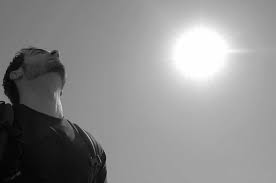Gravity and Exercise: Pranayama, Yogic Breathing

In yoga, the breath is called pranayama; and it is a practice. Pranayama is a composite of two Sanskrit words: “Prana,” meaning life force, and “Yama,” control. Control your life force. It is a terrific concept we don’t often take seriously. Certainly, your life force is subject to the force of gravity. Why not harness it to improve your breathing and possibly even change your life?
We breathe every day— hopefully all day long— without much attention to what is happening in the body. As you breathe in, your intercostal muscles (those between the ribs) contract, your ribs move upward, and your diaphragm descends thus expanding your chest cavity. This expansion lowers the air pressure in your chest to below that of the air outside of your chest. Air from outside flows in to fill the vacuum created. As you exhale, your intercostals and diaphragm relax, and your chest cavity gets smaller, which builds pressure on the air within. This higher pressured air in the lungs then flows out through your airways to lower pressured air outside.
Air finds equilibrium in each cycle of breath. So does the body. Posture, gravity, and breath are intimately connected (try to take a deep, full breath as you slouch, and you’ll immediately feel that connection). The body’s center of gravity shifts slightly with each breath, the body responds, bringing itself back to upright, or neutral.
Gravity is a relentless change agent, so too, the breath. Let’s play with pranayama and gravity to learn how to use them to our advantage. In the following yoga exercises, we will exaggerate the changes in the body’s center of gravity in order to increase awareness of how the breath moves. Perform each exercise slowly and for several breaths. Emphasize long, slow, deliberate inhales and exhales.
Cat/Cow
Cat/Cow illustrates, in an exaggerated way, the normal movement of the diaphragm as you breathe. Kneel down on all fours: hands below shoulders, knees below hips. On a long, smooth inhale, let your belly drop towards the floor, arch your back, and let your head and hips rise toward the ceiling – keeping the front and back of your neck long. This is Cow pose. As you exhale slowly, round your back like a Halloween cat, draw your belly inward toward the spine. This is Cat. The diaphragm comes up, just as it does when you breathe while standing. Continue practicing Cat/Cow for several minutes, breathing in synch with your movement.
Supine Breathing
Lie on your back, with your knees bent. Put one hand on your belly. Notice its movement as you breathe: rising on the inhale, sinking on the exhale. Notice the engagement of your belly as you inhale. Your body has to work a little harder against gravity in order to fully inhale in this position. Notice how the exhale is easier; gravity helps. Practice this “belly breathing” for several more breaths, or as long as is comfortable.
Prone Breathing
Roll over onto your belly, rest your forehead on the floor, your arms palms up along your sides, and breathe. Notice how the floor impedes the movement of the breath. On the inhale, the breath moves the back of the ribs up toward the ceiling and out slightly to the sides. Notice how the low back expands. On the exhale, gravity pulls the body down onto the belly as the diaphragm relaxes up toward the heart.
Child’s Pose
Come into a kneeling position, with knees spread wide, then lower your torso down to the floor. Rest your forehead on the floor and reach your arms out in front of you. Let your belly release with gravity toward the floor. Notice how the low back and perineum (the base of the pelvic floor) move with each breath.
When standing in anatomical neutral (upright, erect spine, legs slightly apart, arms at your side), the center of gravity in the human body is just in front of the second sacral vertebra (in the low pelvis). Remain in this pose for several minutes and begin to notice how Child’s Pose allows you to bring more of the breath to that area of the body.
Pranayama
By bringing awareness to the way your breathing changes in response to your center of gravity, pranayama techniques aid the parasympathetic nervous system and activate the “relaxation response,” which reduces stress, modulates the heart rate, and brings calm. Which ultimately brings resilience in the face of challenges such as the force of gravity.
References:
Aline Newton (1998). Breathing in the Gravity Field. http://www.somatics.de/NewtonBreathing.pdf
Eric Armstrong (2102). Gravity and Breath. http://voiceguy.ca/blog/voiceguy/gravity-and-breath
Image: http://maxpixel.freegreatpicture.com/Sky-Excursion-Black-And-White-Sun-Breathing-114446
Great article Jane! As a regular meditator, I’m well aware of the importance of breath awareness and focus. I’ll check these exercises out!
Cheers, John